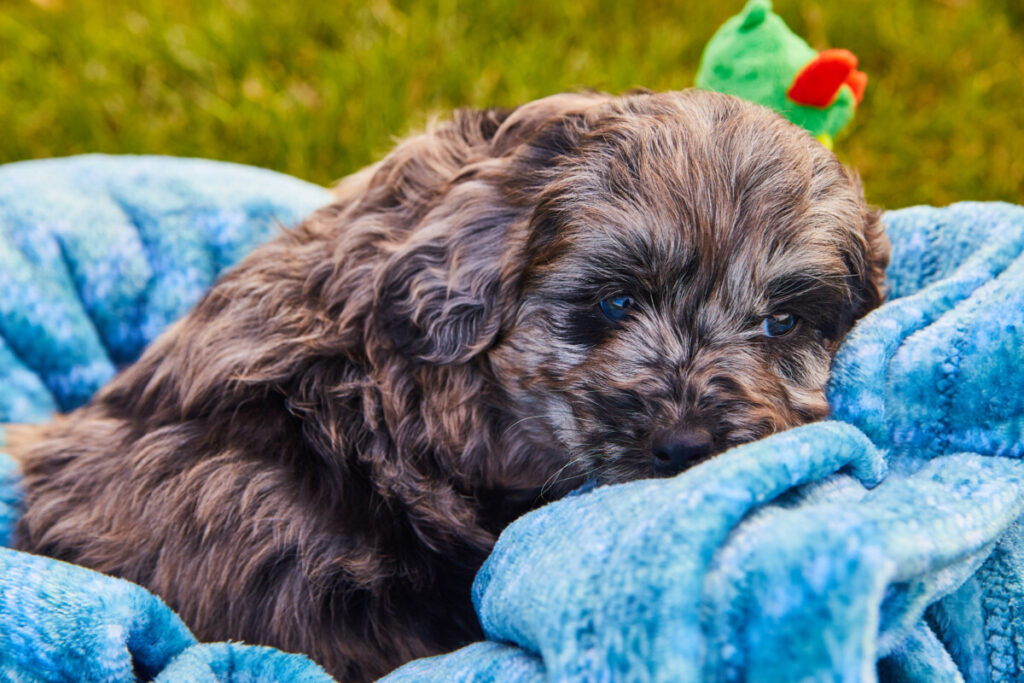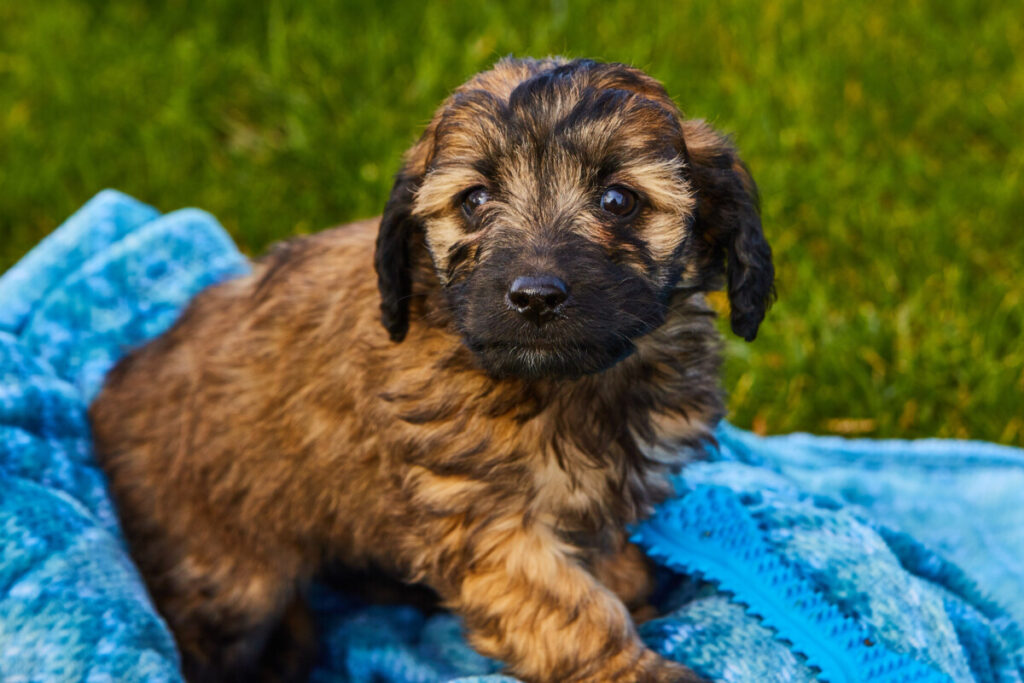Do Black Goldendoodles Change Color?
Although Goldendoodles are typically expected to have a coat somewhere between cream and apricot, their poodle genes make it possible to have a range of colors including red, brown, and even a dark black. Since certain colors are coveted more than others, it is important to know if your pup has the chance to become lighter.
Black Goldendoodle fur will change color over time. They will see changes during the transition from a puppy coat to a mature coat, and continued lightening throughout their lifetime. They can lighten to a new color, but a black Goldendoodle is unlikely to ever be the stereotypical ‘golden’ color.
Multiple factors play into the color a puppy is born with, as well as how that color changes through maturity. The final adult color of your Goldendoodle’s coat is largely unpredictable, but understanding the possibilities will help you pick out the right puppy for your preferences.
What Determines Coat Color in Goldendoodles?
The combination in the genetics of the parents is what’s going to create the color of their offspring. However, it is not as simple as looking at the parents’ colors (their phenotype) and mixing them. The genotype of the parents is a much more accurate predictor of color, but that requires a DNA test. A DNA test will also tell you about any hidden recessive genes that could show up in a litter.
Golden retrievers have 3 possible colors recognized by the American Kennel Club. Dark golden, golden, and light golden are the three purebred possibilities. Poodles have 10 recognized ‘standard’ colors, but they also have the possibility for 18 different combination colors. The standard colors are apricot, black, blue, brown, cream, grey, red, silver, silver beige, and white.
All these colors combined, along with the possibility of two-colored coats, present an incredible range of coat colors the are possible for a Goldendoodle. Many people prefer a lighter color Goldendoodle because of the teddy-bear look. Those with allergies may prefer a darker colored Goldendoodle since the higher prevalence of poodle genes makes the dog more likely to be hypo-allergenic.
Each Goldendoodle color and personality combination is unique, making them the perfect breed for so many families. No color is truly better than another, it is all preference of what you think is the cutest.
Do Goldendoodle Puppy Coats Get Replaced?

The coat that your Goldendoodle puppy is born with will eventually be completely replaced. You can make some color predictions based on the puppy coat, but remember that you may encounter some unexpected changes by the time they are a year old.
Puppies will have a soft and fluffy coat, no matter their adult hair texture, until they are 6-10 months old. Somewhere in this timeframe, the puppy will begin to shed its coat and grow a thicker and stiffer coat. The mature coat is usually a bit lighter than the puppy coat, but can occasionally be darker.
The process of changing coats will take at least a few months, so don’t be concerned if your puppy’s coat still seems to be changing past a year old. Your puppy will also need extra grooming attention during this time to help prevent painful matting.
After the puppy coat is shed and a mature coat has fully grown in, you will have a really good idea of coat texture and color for the rest of their life. You can see wavy, curly, or straight hair and any range of colors from black to white. Some color changes are still possible, and even likely, but usually, there’s nothing dramatic or surprising.
Black Goldendoodles Changing Color
Truly black Goldendoodles, as opposed to a dark brown, are fairly unlikely since black is a recessive gene in both poodles and golden retrievers. Other colors can have all sorts of feature color combinations, but black Goldendoodles are unique in the way that all of their features will match their coat. Their noses, eyes, and paw pads will also likely be all black.
Though it is likely to see some lightening, black Goldendoodles are not guaranteed to ever change coat color. Do not count on any particular change when you are picking out a puppy.
There are also multiple ways the coat may change. Most commonly you will just see a small difference as the coat eventually becomes one or two shades lighter. Usually, black Goldendoodles hold to their black color, but there are a few possibilities for a bigger change.
A common way for black coats to mature is by turning grey. A grey Goldendoodle starts as black, just like a silver poodle. If your black Goldendoodle is actually silver, their coat will change by two years old, though you will probably see some evidence of grey fur before then.
This should not be confused with the growth of grey hairs in the last few years of life. Just like humans, black Goldendoodles will start growing grey hairs as they age. This growth is much later in life than any change to a grey Goldendoodle would be.
A rare and expensive but coveted possibility for a black Goldendoodle puppy is to be a sable Goldendoodle.
Sable Goldendoodles start as either black to dark brown and will mostly lighten to a golden or apricot color. As the puppy loses its coat and grows adult fur, it will fade to a light tan color. However, this is not a complete change as the dog will still retain some degree of its black coloring.
This can be as minimal as the tips of the feet, nose, and ears. More often, however, all the fur will keep black tips on the golden base. This cool faded look is very popular and can get quite expensive since breeding is so difficult.

Can other colors of Goldendoodle change?
All colors of Goldendoodle will likely see some minimal degree of lightening through maturity. Likewise, all colors can see significant changes during the transition from the puppy coat to a mature coat of apricot, brown, cream, or red.
These colors can see some really unique color combination possibilities like merle, parti, and phantom Goldendoodles.